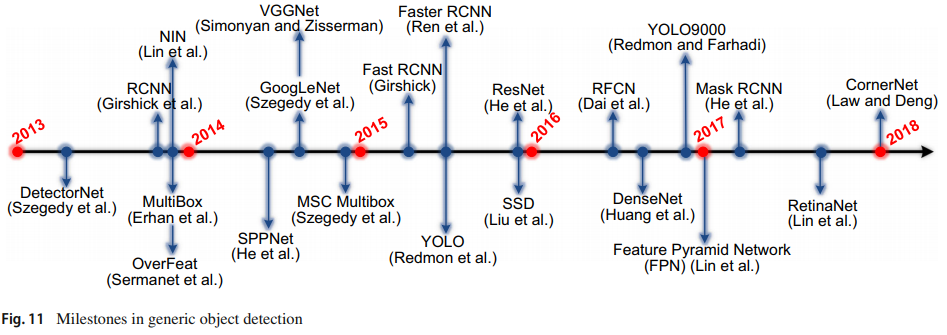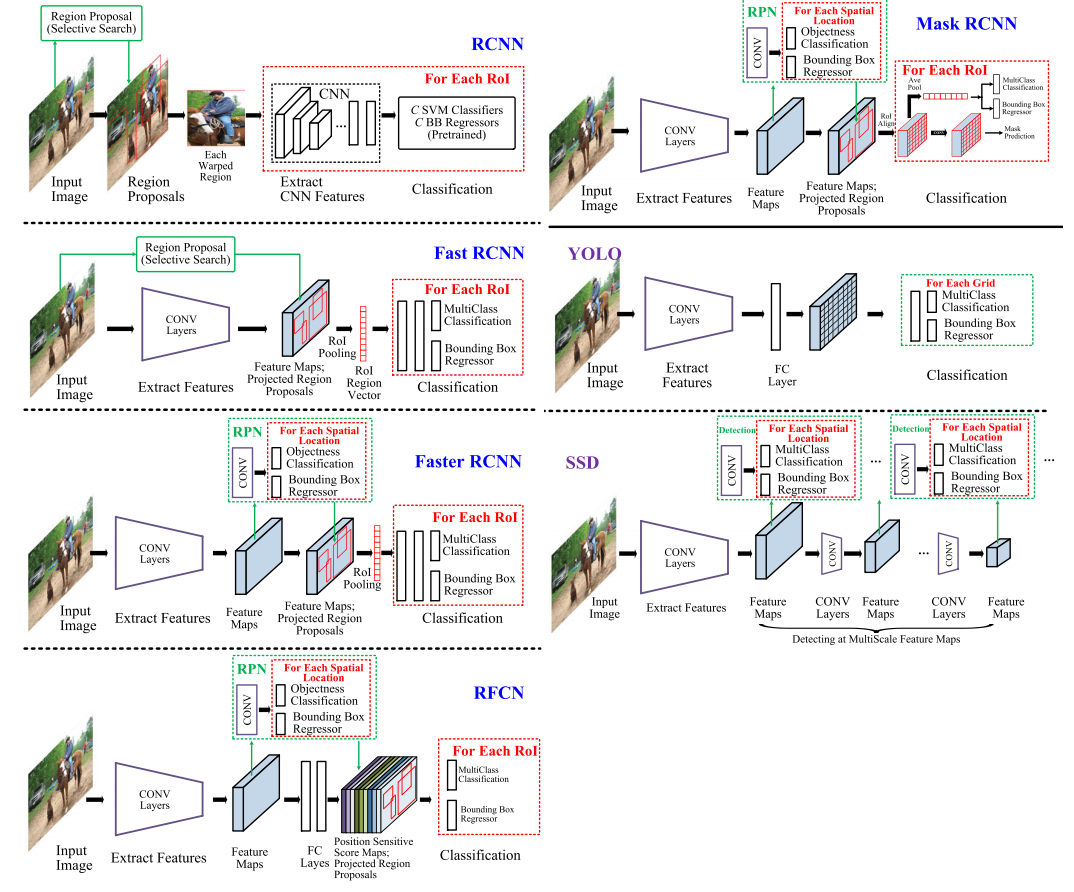【Paper】 Deep Learning for Generic Object Detection, A Survey - Summary
Deep Learning for Generic Object Detection, A Survey 논문 리뷰 및 정리
Deep Learning for Generic Object Detection: A Survey
My Conclusion after I read the paper.
- this paper introduce Either too easy or too old Detector for me… Rather read the latest paper.
0. Abstract
- a comprehensive survey of the recent achievements
- More than 300 research contributions
- frameworks/ representation/ proposal generation/ context modeling/ training strategies/ evaluation metrics
- promising directions for future research
1. introduction
- Deep Convolutional Neural Network (DCNN) called AlexNet in 2012
- Over the past 5 years, this article attempts to track in order to gain a clearer picture
popular datasets/ evaluation metrics/ context modeling/ detection proposal methods.
- many object detection previous surveys (refer to reference this paper later)
- pedestrian detection
- face detection
- vehicle detection
- traffic sign detection
- generic object detection
- we have limited our focus to top journal and conference papers. and limited picture detection not Video.
- follows
- 20-years are summarized
- A brief introduction to deep learning
- Popular datasets and evaluation criteria
- the milestone object detection frameworks
- state-of-the- art performance
- future research directions
2. Generic Object Detection
2.1 The Problem
- future challenges will move to the pixel level object detection.
2.2 Challenges
- Accuracy Related Challenges
- intra-class variations : color, texture, material, shape, size, poses, clothes
- Imaging condition variations : lighting, physical location, weather, backgrounds
- 20, 200, 91 object classes / VOC, ILSVRC, COCO is much smaller than can be recognized by humans.
- Efficiency and Scalability Related Challenges
- mobile/wearable devices have limited computational capabilities and storage space
- A further challenge is that of scalability : unseen objects, unknown situations, it may become impossible to annotate them manually, forcing a reliance on weakly supervised strategies.
2.3 Progress in the Past 2 Decades

- accurate annotations are labor intensive to obtain
- Ability to detect many object categories matches that of humans(인간 같은) 3000~3000 categories is undoubtedly an unresolved problem so far.
3. A Brief Introduction to Deep Learning
- pass
4.1 Dataset
- PASCAL VOC
- ImageNet
- MS COCO
- Places
- Open Images
4.2 Evaluation Criteria
- Frames Per Second (FPS)
- precision, and recall.
- Average Precision (AP) -> over all object categories, the mean AP (mAP)


